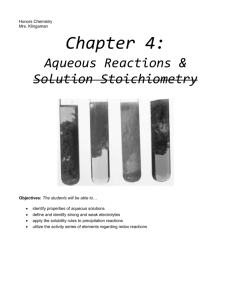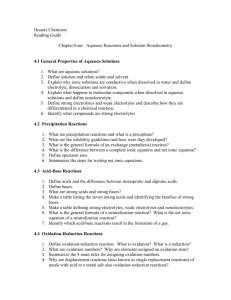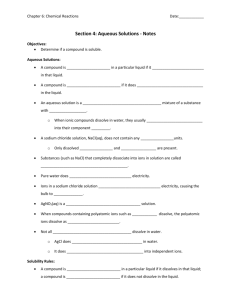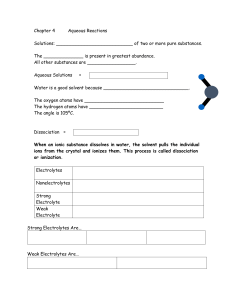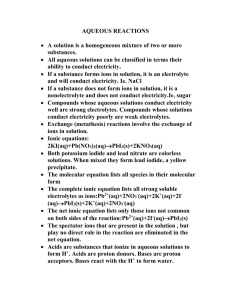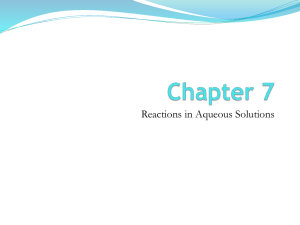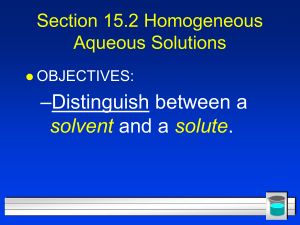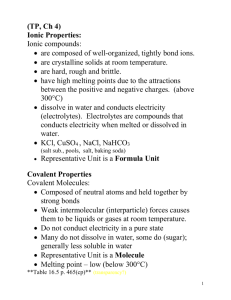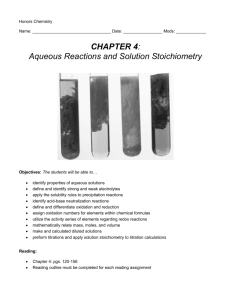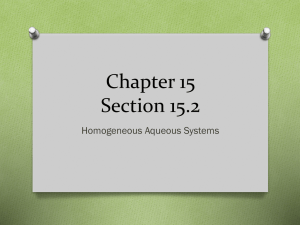Section 3.3 Stoichiometry and Chemical Reactions
advertisement
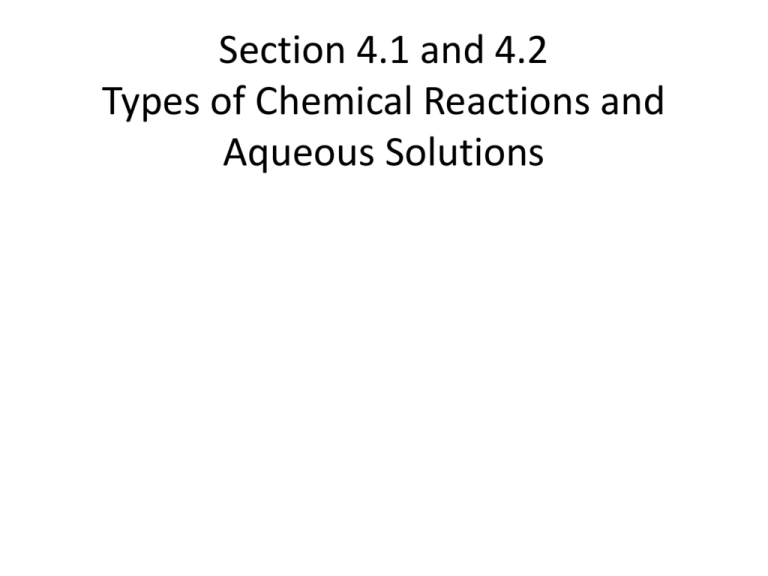
Section 4.1 and 4.2 Types of Chemical Reactions and Aqueous Solutions In this section: a. Types of Chemical reactions 1. Combination reactions 2. Decomposition reactions 3. Displacement reactions b. Aqueous Solutions 1. Compounds in aqueous solution 2. Electrolytes 3. Solubility of ionic compounds Combination Reactions Two or more reactants form a single product Decomposition Reactions A single reactant breaks up to form two or more products Single Displacement Reactions One “part” of a compound is replaced by another Double Displacement Reactions Metathesis Reactions Two atoms or ions exchange. Two atoms or ions exchange. Precipitation reactions: Two atoms or ions exchange. Acid-base (neutralization) reactions: Two atoms or ions exchange. Gas-forming reactions: Aqueous Solutions Solutes dissolved in the solvent water. Categorized by the nature of the dissolved species. Aqueous Solutions: Electrolytes Solutes dissolved in the solvent water. Aqueous Solutions: Electrolytes Strong Electrolytes: all solute dissociates to form ions in solution. Aqueous Solutions: Electrolytes Weak Electrolytes: A small fraction of solute dissociates to form ions in solution. HF(aq) H+(aq) + F-(aq) Aqueous Solutions: Electrolytes Nonelectrolytes: Solute molecules do not form ions in solution. Example: CH3OH Aqueous Solutions: Electrolytes Strong electrolytes: conduct electricity well soluble ionic compounds strong acids Weak electrolyte: conduct electricity poorly weak acids and the weak base NH3 Nonelectrolytes: do not conduct electricity most molecular, covalent compounds Solubility of Ionic Compounds Basic Idea: for ionic compound MX (M+ cation and X- anion) When added to water, does: MX(s) M+(aq) + X-(aq) happen? Yes: compound is soluble in water No: compound is insoluble in water Solubility of Ionic Compounds A little more complicated: how soluble is soluble? 1 g solute per 100 g water. Solubility Rules Part 1: things that are generally soluble Solubility Rules Part 1: things that are generally insoluble
